Without light we see nothing. Photographers know this better than anyone, as they work with light as such (and with darkness). In Tobias Zielony’s exhibition at KOW, light plays a part in different ways, probing from four angles the question of whether and how light (and darkness) are political today or help shape the social. The show transports us to Asia, Bitterfeld, Poland, and the Baltic countries.
Ohne Licht sieht man nichts. Das weiß die Fotografie besonders gut, arbeitet sie doch unmittelbar mit dem Licht (und dem Dunklen). Gleich vierfach spielt das Licht in Tobias Zielonys Ausstellung bei KOW eine Rolle und tastet dabei auch vierfach die Frage ab, in wieweit Licht (und Dunkelheit) heute politisch sind oder das Soziale mit formen. Wir reisen dabei nach Asien, Bitterfeld, Polen und ins Baltikum.
It opens with pictures that Zielony took starting in 2017 (The Fall). In Japan, South Korea, China, Malta, and Germany. They are single shots. What we see are not narratives about specific places, not researches into selected locales—genres familiar from Zielony’s oeuvre—but isolated moments in time, portraits. What do they have in common? Is it a sense of uncertainty shared by the sitters, their anticipation of crises to come? Is it the question whether subcultural youth cultures can still hope to be subversive? Or an inquiry into what remains of the individual photographic image’s power when it is stripped of its complex contexts? Asked how his interactions with his protagonists have changed since he started out in photography twenty years ago, Zielony replies: the picture he creates as a photographer has more and more become the product of a shared visual and imaginative space. His current crop of collaborators are social media natives: acutely aware of the power of the (self-)portrait and conversant with the conditions of its genesis, with the signaling power or ambiguity of gestures, with theatrical formulae, even with the lighting conditions that the self needs and wants for the project of its presentation. For as Brecht wrote, the ones are in the dark, and the others in the light. Seeking exposure, exposing themselves, in order to emerge from the dark: that choice is available to many today.
Next, we see two dozen prints that—intersecting and imbricated—unfurl as a linear reel. The motifs were captured in Poland and Estonia in 2022. The posing and light-dark compositions are reminiscent of The Fall, but the atmosphere seems to have changed. The war next door in Ukraine and the possible threat of a Russian attack, but also the political situation in the models’ own countries leave their mark on the pictures. Individual pictures, here, interweave, form a network, as situations overlap and elements interlock that are perhaps politically and emotionally interrelated, though they do not and cannot tell a single story. The situations, the people, are different. The overall state of affairs, however, is not.
Den Auftakt machen Bilder, die Zielony seit 2017 fotografierte (The Fall). In Japan, Südkorea, China, auf Malta und in Deutschland. Es sind Einzelbilder. Nicht Narrationen über bestimmte Orte, nicht die eine lokale Recherche, die aus Zielonys Werk wohlvertraut sind, werden hier gezeigt, sondern herausgelöste Momente, Portraits. Was sie vereint? Ist es eine Verunsicherung der Dargestellten in Vorahnung noch kommender Krisen? Ist es die Frage, ob subkulturelle Jugendkulturen noch Aussicht auf Subversion haben? Oder die Suche danach, was das fotografische Einzelbild leisten kann, wenn man es aus komplexen Zusammenhängen isoliert? Gefragt, was sich in der Interaktion mit seinen Protagonist:innen seit den Anfängen seiner Fotografie vor 20 Jahren verändert hat, antwortet Zielony so: Das Bild, das er als Fotograf herstellt, wurde immer mehr zum Produkt eines gemeinsamen Bild- und Imaginationsraums. Die an sozialen Medien geschulte Generation seiner Modelle weiß heute sehr genau über die Macht des (eigenen) Bildes Bescheid und auch über die Bedingungen seiner Entstehung, über die Eindeutigkeit oder Vieldeutigkeit von Gesten, über Inszenierungsformeln, ja über Lichtverhältnisse, die das eigene Selbst für sein Darstellungsprojekt braucht und will. Denn die einen sind im Dunkeln und anderen sind im Licht, schrieb Brecht. Heute verfügen viele über die Möglichkeit, durch Selbstbelichtung aus dem Dunkeln zu treten.
Als nächstes sehen wir zwei Dutzend Drucke, die sich – einander überschneidend und überlagernd – als lineares Band abwickeln. Die Motive entstanden 2022 in Polen und Estland. Posen und Licht-Dunkel-Verhältnisse erinnern an The Fall, aber die Atmosphäre scheint anders. Der nahe Krieg in der Ukraine und die mögliche Bedrohung durch Russland, aber auch Repressionen im eigenen Land, schlagen sich in den Bildern nieder. Hier verschränken sich Einzelbilder zu einem Verbund, überlappen sich Situationen, greift ineinander, was vielleicht politisch und emotional zusammengehört, aber nicht die eine Geschichte ergibt und auch nicht ergeben kann. Die Situationen, die Menschen, sind verschieden. Die Gesamtlage indes nicht.
We might call it an apocalyptic farewell to the present that flits through the living room: yet what the screen shows is ordinary everyday life, its reflexes lighting up the young viewers’ faces
Man könnte es einen apokalyptischen Abgesang auf die Gegenwart nennen, der durch das Wohnzimmer flackert, wäre das Gezeigte nicht der ganz normale Alltag, dessen Widerschein die Gesichter der jungen Leute illuminiert.
The centerpiece of the exhibition is the two-channel video installation Watching TV in Narva, which made its public debut in late 2022 at the Museum Marta Herford. Narva is an Estonian city on the border with Russia. Most of its residents speak Russian, and since the demise of the Soviet Union, many have been officially stateless or held so-called alien passports. To curb the influence of Russian propaganda, the Estonian government shut off the major Russian news stations when Russia launched its war of aggression against Ukraine in the spring of 2022. Zielony recorded his footage in a dark interior. Illuminated only by the erratically flickering light of a television screen, several young people comment on the television program as they zap through the channels. We hear Estonian, Russian, Ukrainian, and English. Scenes from the ongoing war alternate with feature films, series, esoterica, music—and almost everything seems tinged by a climate of violence. We might call it an apocalyptic farewell to the present that flits through the living room: yet what the screen shows is ordinary everyday life, its reflexes lighting up the young viewers’ faces.
In another room, Zielony presents his new project Wolfen (two-channel video installation and glass display case, 2022). It is about a lost dirty icon, and about the distant future. The town of Bitterfeld-Wolfen was home to ORWO-Werke, East Germany’s largest film factory. ORWO’s black-and-white and color films helped define the style of movies and photography throughout the Eastern Bloc. Until the Wall fell. The sprawling plant once employed 15,000 people; now two dozen work here. The rest was liquidated, the factory halls torn down. What is left of the factory manufactures an especially durable archival film designed to preserve analog pictures and digital data in the form of QR codes for over a thousand years. Who, one wonders, will read the information a millennium from now? Extraterrestrials (who speak English)? We see photographs Zielony took on the scene, some on that very long-lasting film. And we read short texts based on Zielony’s conversations with employees who worked in the factory’s darkroom. The plant’s notorious contamination with toxic chemicals, the degrading labor conditions, the dependency on the Soviet Union come up, as do the collapse of the industry and questions of the past and the future, of knowing and ignorance, understanding and incomprehension, light and darkness.
Text: Alexander Koch
Translation: Gerrit Jackson
Photos: Ladislav Zajac
Das Kernstück der Ausstellung bildet die 2-Kanal-Videoinstallation Watching TV in Narva, erstmals zu sehen Ende 2022 im Museum Marta Herford. Die estnische Stadt Narva liegt an der Grenze zu Russland. Die meisten Einwohner:innen sprechen Russisch, seit dem Ende der Sowjetunion sind viele offiziell staatenlos oder haben einen sogenannten Alien-Pass. Um den Einfluss der russischen Propaganda zu begrenzen, stellte die estnische Regierung die größten russischen Nachrichtensender mit Beginn des Angriffskrieges auf die Ukraine im Frühjahr 2022 ab. Zielony drehte seine Aufnahmen im dunklen Innenraum. Nur beleuchtet von dem wechselhaften, flackernden Licht eines Fernsehers, kommentieren einige junge Menschen das Fernsehprogramm, während sie durch die Kanäle zappen. Man hört Estnisch, Russisch, Ukrainisch und Englisch. Szenen des aktuellen Kriegsgeschehens wechseln sich ab mit Spielfilmen, Serien, Esoterik, Musik – fast alles erscheint dabei eingefärbt von einem Klima der Gewalt. Man könnte es einen apokalyptischen Abgesang auf die Gegenwart nennen, der durch das Wohnzimmer flackert, wäre das Gezeigte nicht der ganz normale Alltag, dessen Widerschein die Gesichter der jungen Leute illuminiert.
In einem weiteren Raum zeigt Zielony sein neues Projekt Wolfen (2-Kanal-Videoinstallation und Vitrine, 2022). Es geht um eine untergegangene schmutzige Ikone, und um die ferne Zukunft. Die ORWO-Werke in Bitterfeld-Wolfen waren die größte Filmfabrik der DDR. Die Schwarzweiß- und Farbfilme von ORWO prägten Kino und Fotografie im gesamten Ostblock. Bis zur Wende. Wo 15.000 Menschen arbeiteten, sind derzeit noch zwei Dutzend angestellt. Der Rest ist abgewickelt, die Werke abgerissen. Produziert wird heute in Wolfen ein besonders langlebiger Archivfilm, der verspricht, analoge Bilder und digitale Daten als QR-Code über 1000 Jahre lang zu bewahren. Es fragt sich, wer dann die Informationen noch lesen wird: Außerirdische (die Englisch sprechen)? Zu sehen sind Fotos, die Zielony vor Ort machte, zum Teil auf dem Film selbst fotografiert, der so lange hält. Zu lesen sind kurze Texte, die auf Gesprächen basieren, welche Zielony mit Arbeiter:innen führte, die im Dunkelraum der Fabrik arbeiteten. Die berüchtigte chemische Verseuchung des Standortes, die unwürdigen Arbeitsbedingungen, die Abhängigkeit von der Sowjetunion, das wird hier ebenso Thema wie der Kollaps der Industrie und Fragen nach Vergangenheit und Zukunft, nach Wissen und Nichtwissen, Verstehen und Nichtverstehen, nach Licht und Dunkel.
Text: Alexander Koch
Photos: Ladislav Zajac
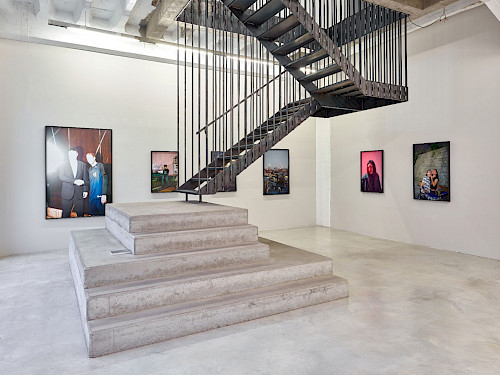
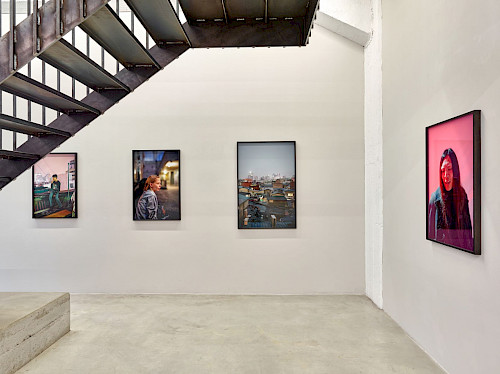
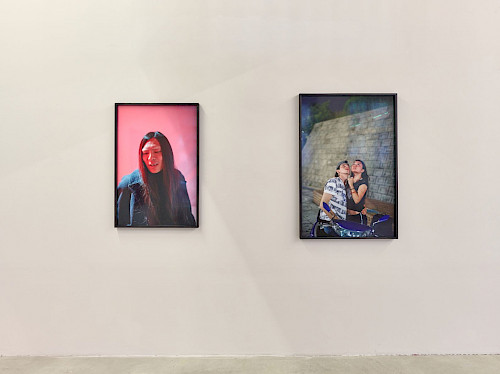

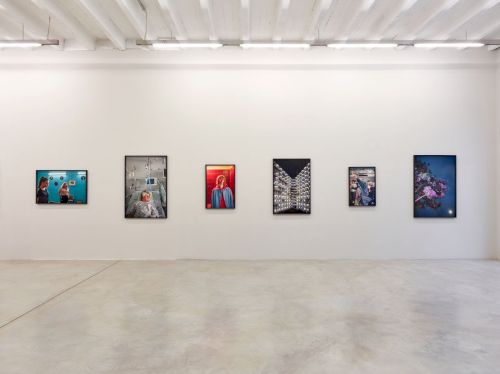

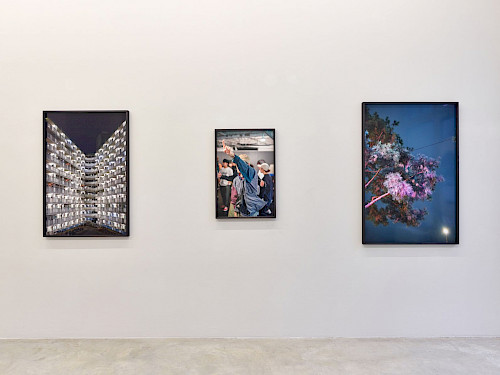
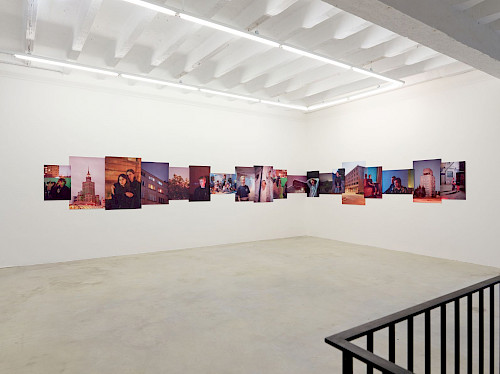
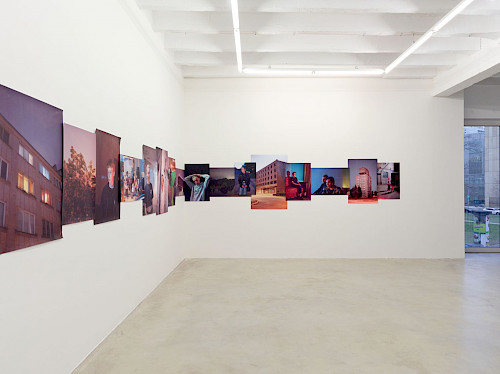
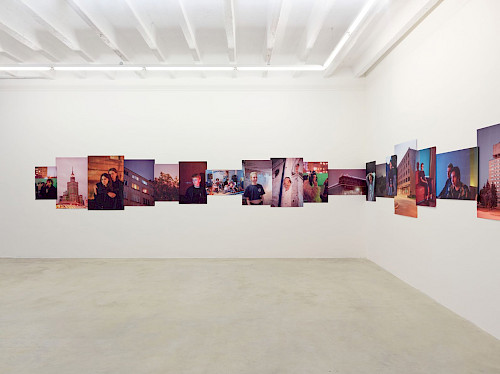
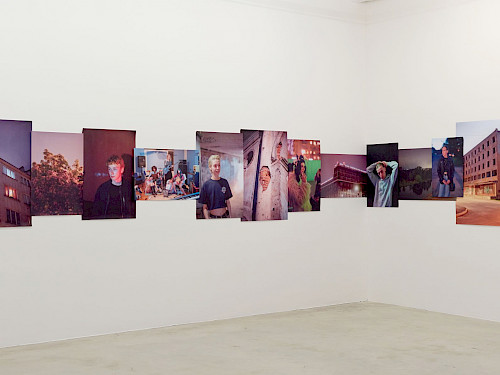

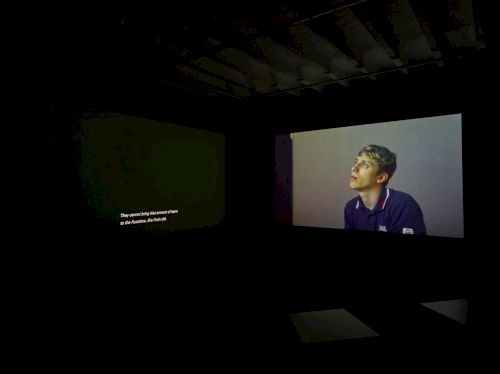


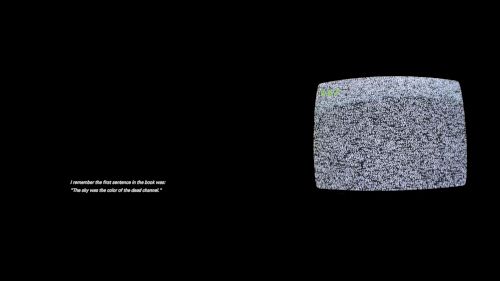
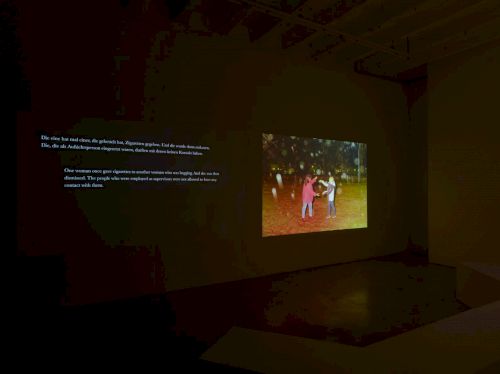
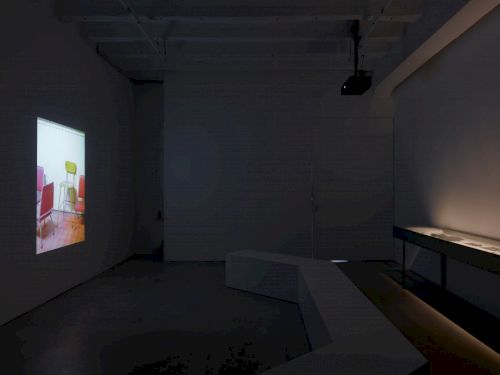
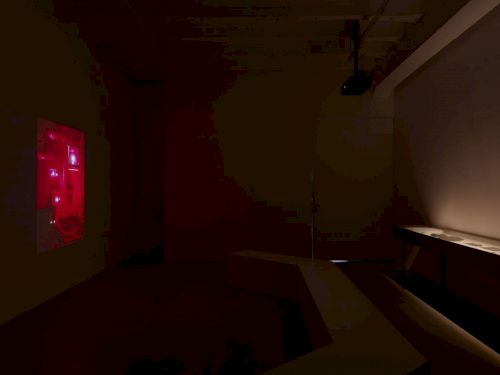
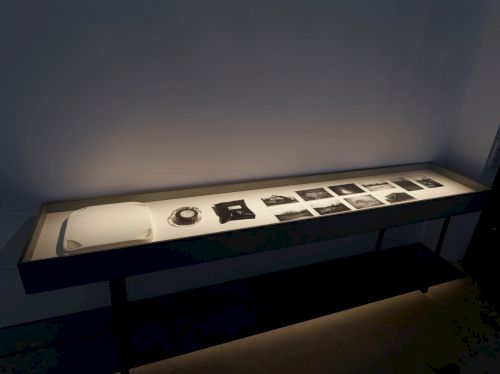
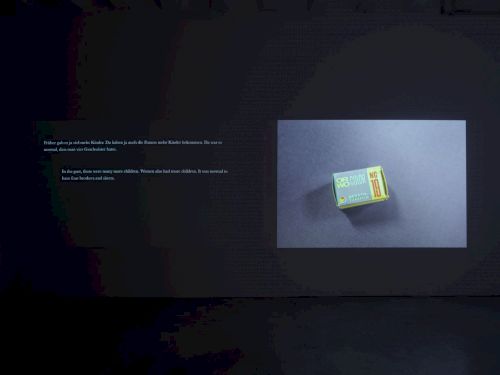
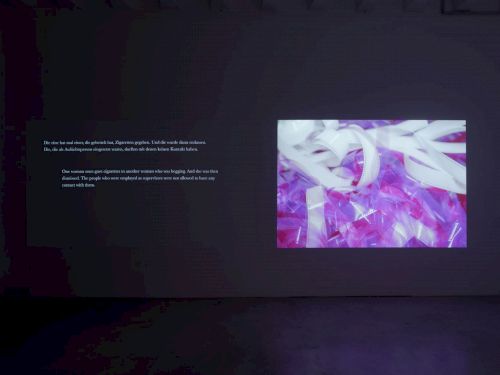

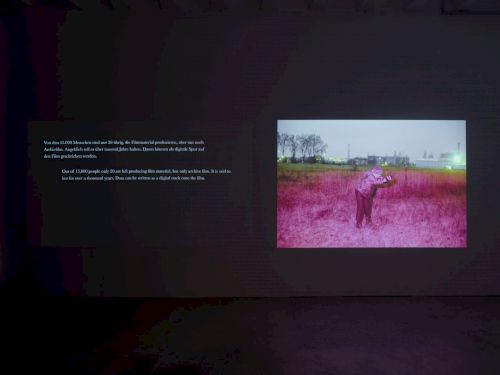
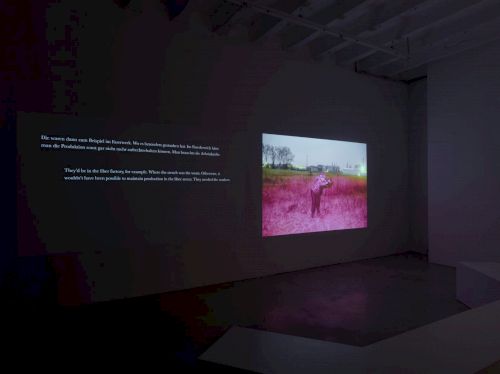
- Current
- Upcoming
- 2025
- 2024
- 2023
- 2022
- 2021
- 2020
- 2019
- 2018
- 2017
- 2016
- 2015
- 2014
- 2013
- 2012
- 2011
- 2010
- 2009